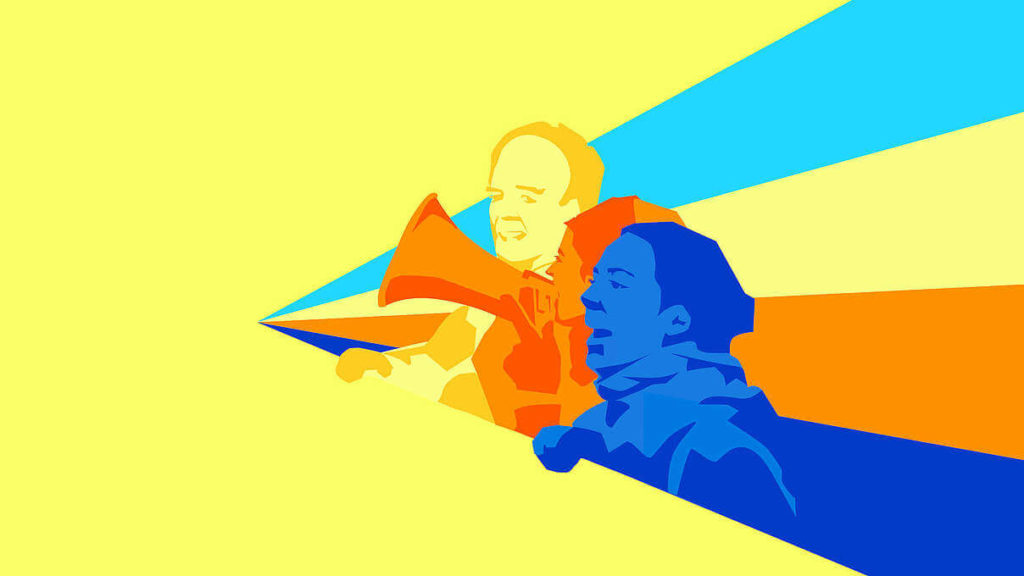
What are the new trends and approaches for advocacy communications? Has the pandemic and Web 3.0 accelerated the movement towards digital advocacy, or are we slowly returning to tried-and-tested, traditional approaches?
I spoke with Marco Vollmar, Executive Communications Director of WWF Germany, to dive deeper into these questions while exploring the future of advocacy communications.
This article builds on a series of interviews on the changing face of communications for a major new book I am writing called “ENGAGE”.
You will find out how the pandemic helped WWF Germany expand their digital advocacy communications strategies, while also helping them to build personal connections at scale.
In this exclusive interview, Vollmar also outlines his innovative editorial strategy, while showcasing how WWF maximises content planning and works with influencers.
Ready to get the inside scoop?
Let’s dive in!
Q. As Communications Director of WWF Germany, how have you been able to maintain a collaborative, agile team environment during the pandemic when everybody was exclusively online?
Technically, even before the pandemic, we were already prepared for teamwork in a digital way via Zoom, Teams and other online tools.
Having said this, the intensity, speed and dynamic of digital work during the pandemic was massive. There are two learnings that I retain from this experience.
On the one hand, you have to be more efficient and make sure that your meetings are on time, that the agenda is set, that all is well prepared and that you achieve your objective after 30 minutes. In a digital world, people are more focused and we can become much faster to the point.
On the other hand, we realised that creativity is much greater in a physical brainstorming workshop atmosphere. So what is the consequence now after two years? We try to incentivize colleagues to come into the office for brainstorming, cross-functional discussions and creative design thinking workshops, not only on Zoom calls.
In the past, we interacted in the cafeteria or around the coffee machine. Now, this has changed. That’s why we are now revising the design and architecture of our office, where we are now seeking to create more spaces to really encourage interaction and creative discussions.
Q. The NFA campaign is a testament to your success in the digital sphere. What are some further insights that showcase how WWF Germany has been developing its digital skills and digital-first approach?
For many years we have been investing substantially in our IT infrastructure. This is a key pillar to being successful in the coming years.
Why? First of all, we are in the business of trust, so we have to make sure that we raise our income as securely as possible, and this includes a secure IT infrastructure. Secondly, it is crucial that we make it as easy as possible to donate to the organisation at all levels. This requirement accelerated substantially during the pandemic.
In terms of campaigning and advocacy communications, digital allows us to reach new audiences. The NFA campaign is one example where we tapped into new audiences interested in tech and cryptocurrency, who haven’t thought about the link between conservation and the environment. This helped us to reach completely new audiences via digital and to raise over €270,000 with the launch of our Non-Fungible Animals NFT campaign.
The pandemic has catalysed these developments, and from a communication point of view more and more people are finding out about WWF Germany through social channels.
From a conservation point of view, we are investing more into the digitalisation of our tools set with the goal of protecting nature. While conservation is still a very physical act, particularly for our work with local communities, artificial intelligence (AI) with blockchain technology is helping us to easily track species, allowing us to can count them faster and be more efficient, and ultimately protect them in a better way.
The digital sphere has helped us progress income-wise, communications-wise and conservation-wise. For example, we are tracking the movements of ship tankers all over the ocean and can synchronize and compare these routes with those of e.g. blue whales. By gathering this data we can protect the whales and support the creation of marine protected areas.
From a conservation point of view, we are investing more into the digitalisation of our tools set with the goal of protecting nature... The digital sphere has helped us progress income-wise, communications-wise and conservation-wise.
Marco Vollmar Tweet
Q. When creating new advocacy campaigns, how are you maximising your efforts and what are the ways in which you are repurposing your content?
For every campaign, we always plan the concept ahead with different stages and follow a multi-use strategy. We don’t want to create content that is used only one time because it is too expensive when it comes to economies of scale. We want to scale content as much as possible, so we differentiate between different types of content in advance.
For example, if we organise a field trip, we plan every step so that we can maximise every element and content outcome. This is then sorted across all channels using a newsroom that we have developed with content producers and channel “captains” who meet every day in the morning, much like a newsroom team would do.
Each of our channel captains is focused on their own platform, with someone specifically focused on Twitter, someone on LinkedIn, TikTok, Instagram, etc. We also have content chiefs who are responsible for certain issues; there’s a content chief for climate, ecological agriculture, supply chain, biodiversity protection, etc.
Together, this newsroom team brings together different experts, across channels and topics, who meet every day.
The Chief of the Newsroom will also add global context to the discussions. For example, the FIFA World Cup is coming up in Qatar this November. How can WWF Germany position itself around certain issues relative to the World Cup? Can we create content that aligns endangered animals around the football theme this autumn? This will help us reach new audiences while creating content that is top-of-mind.
The result of such planning is a much greater engagement and higher KPIs across all indicators, allowing us to grow faster and bigger than before.
For every campaign, we always plan the concept ahead with different stages and follow a multi-use strategy... The result of such planning is a much greater engagement and higher KPIs across all indicators, allowing us to grow faster and bigger than before.
Marco Vollmar Tweet
Q. How are these internal experts and captains helping to support your advocacy communications?
In the recent German government elections last year we ran a campaign to raise awareness and present our demands to the new government and we introduced a panel of experts who could help the new government with key environmental issues.
This positioned us as experts and enablers of key policy discussions with the new government. By ensuring that we have “WWF Ambassadors” who can lead policy discussions online, we are becoming known by our stakeholders as experts in their field. This is what digital communications has made possible, allowing us to build direct relationships with policy leaders on Twitter and Linkedin – not so much on Facebook or TikTok.
On social media, these WWF Ambassadors are engaging directly with policymakers through direct messages that support our discussions. Thanks to this online relationship it is easier than ever before to communicate with political stakeholders.
The WWF Ambassador concept is similar to the influencer concept. They may not be reaching so many people, but they are influencers on their own merit thanks to their expertise and network.
By ensuring that we have “WWF Ambassadors” who can lead policy discussions online, we are becoming known by our stakeholders as experts in their field. This is what digital communications has made possible.
Marco Vollmar Tweet
Q. What are some external partnerships or influencer marketing programmes that you are developing?
For every campaign plan, we always ask: “Who could support our issue?”, “Who could bring more traction and help us reach our target audience?”. This is part of the checklist for every campaign.
It is a key, strategic pillar because alone we cannot meet our objectives. Even as WWF, a well-known, global organization, we need to find partners and other influencers to support our advocacy communications.
First of all, we always try to find media partners, both online and in print media. Then we try to figure out whether there might be certain personalities who are passionate about the issue at hand and could be interested in raising their voice for our campaign. Then finally, as a third step, we may look at building relations with a mainstream celebrity influencer or a YouTuber, for example.
In order to make sure there is a good fit, we always have an exploratory call with the influencer. That way, we can better understand each other and make sure that we have the same goals. This is a sort of “check-up” to make sure we are in alignment. When we both have the same values, we can work together very, very collaborative collaboratively.
And here we have good examples and good experiences, like the collaboration with Youtuber Simon Unge when we travelled to the Amazon rainforest together. Unge is known as a very sustainable vegan influencer, and in our exploratory call, he said: “I have only one condition: I need to have total editorial control”.
We said yes, and then on the trip to the Amazon rainforest he spotted huge spiders and it turned out that he has Arachnophobia… He was very afraid of the spiders, and it could have been a disaster but he confronted his fear and his video became one of our most viewed videos ever! It was real, authentic and showed a deep experience with nature. It was unique.
It is true that influencers have their own agenda, but what is also important is that we never pay them. We offer our reputation and brand as WWF, and the celebrity brings the reach. If there is a match, then it’s a win-win for all of us. We will support the campaign and pay all the organizational costs, but the influencer is not paid a salary.
For every campaign plan, we always ask: “Who could support our issue?”, “Who could bring more traction and help us reach our target audience?”. This is part of the checklist for every campaign.
John Doe Tweet
Q. What’s next for WWF Germany’s advocacy communications campaigns? Will you be delving into the metaverse or virtual reality?
As a sustainable organization aiming to protect and save nature and the environment, the metaverse represents an opportunity in many ways.
The new generation is immersed in the virtual world of games and digital experiences, so it is a unique way of reaching them.
Moreover, if virtual reality can decrease our consumption of physical goods while using fewer resources, then we should encourage it.
The metaverse could be really big for the environment to help us reduce our ecological footprint. It is already having an important impact on business travel, and this is just the beginning.
* Featured photo: Cover art by WWF Germany for the upcoming G7 Demo in Munich on Saturday, June 25, 2022 to support progressive policies by G7 countries. For more info and to join the demonstration visit wwf.de/g7-demo.
Latest blog posts

Comms Strategies To Survive Aid Cuts
With reduced budgets and increased competition, here are the strategies that comms professionals need to adopt.

How do we learn from failure? Five Lessons For Comms Professionals
Our greatest professional growth often comes from our biggest mistakes. Here are five lessons I’ve learned about the power of failure.

Top 5 Communications Trends in 2025
Ready for 2025? These top five emerging communications trends will help you break through the noise.

